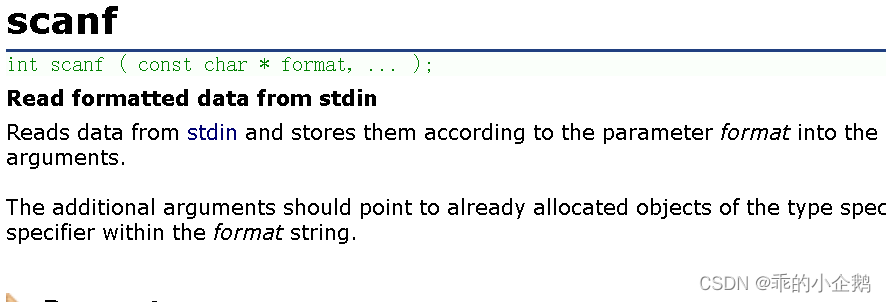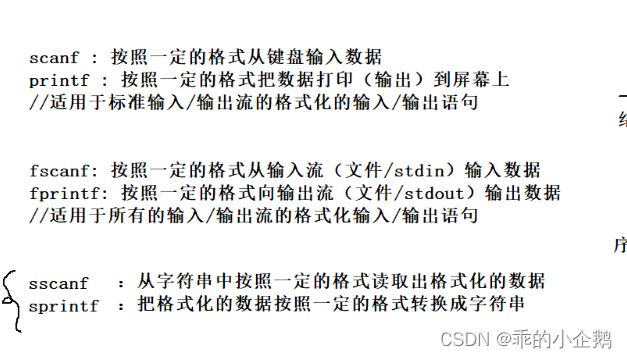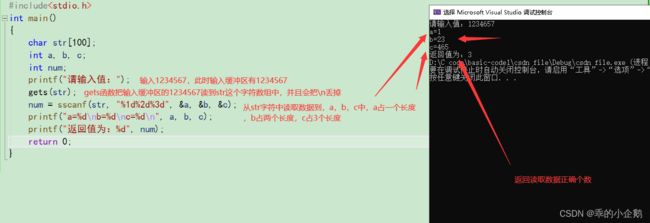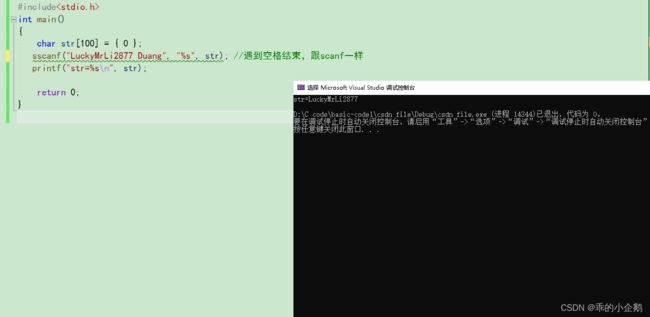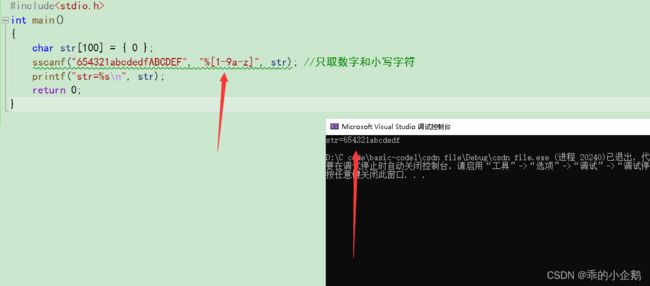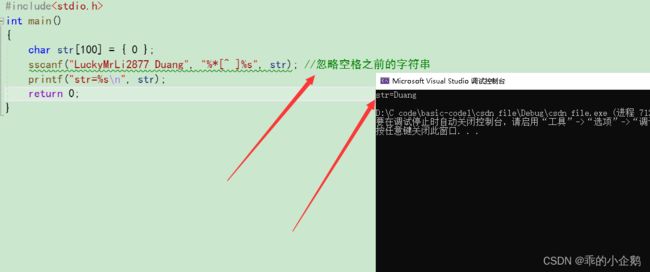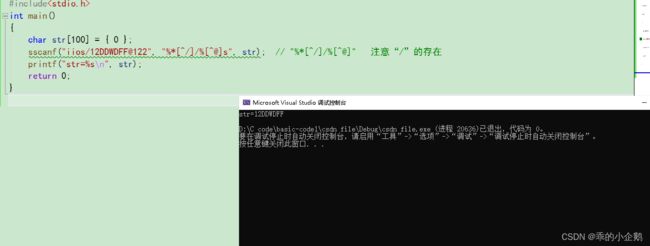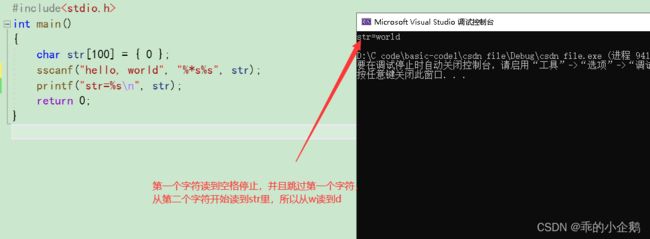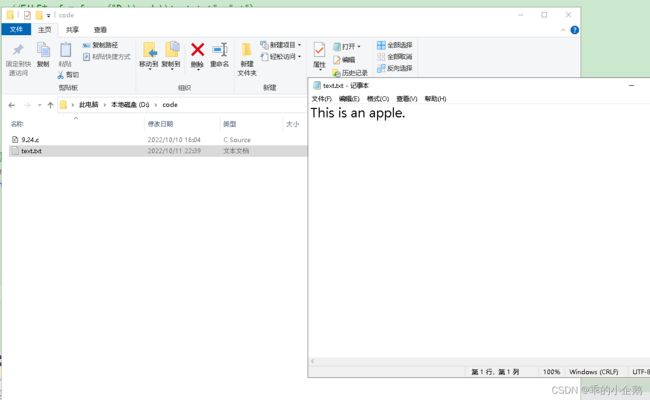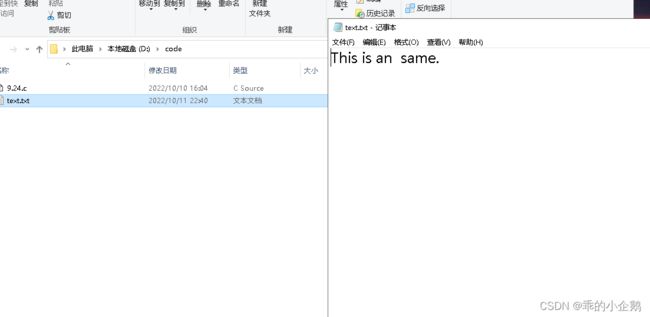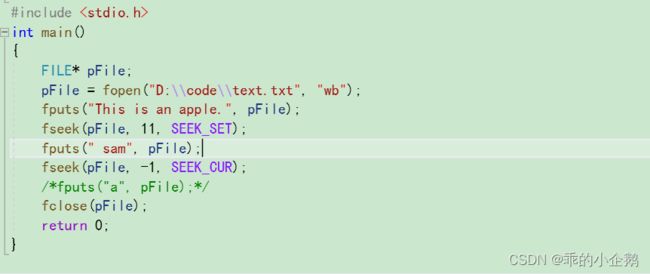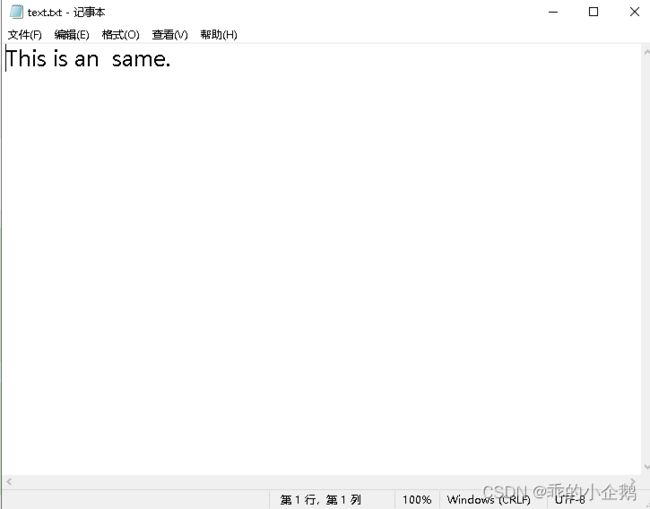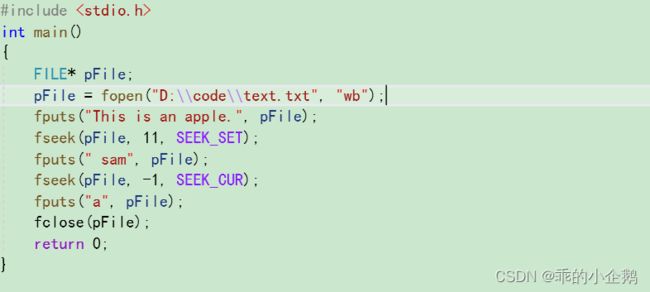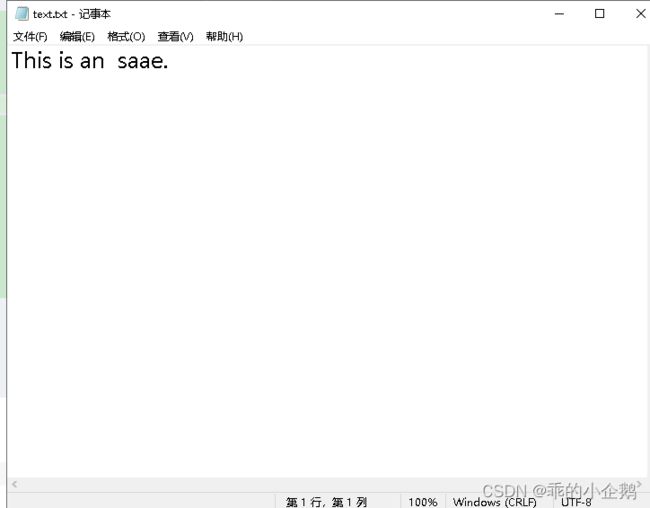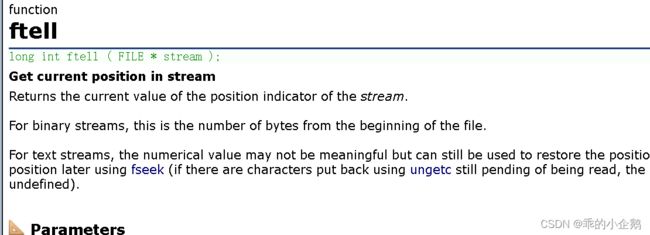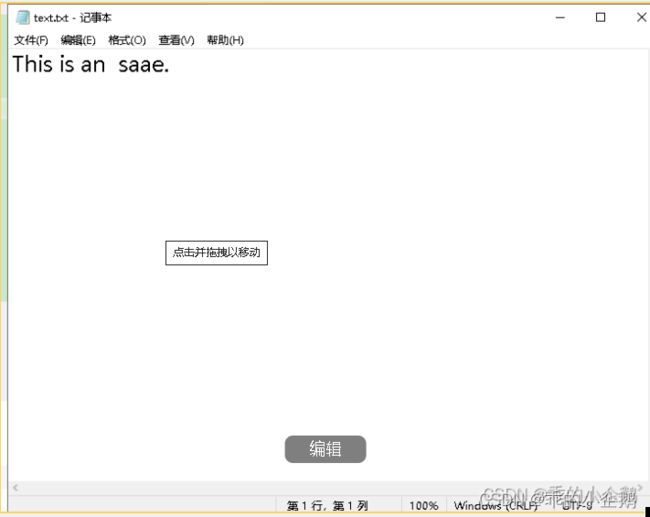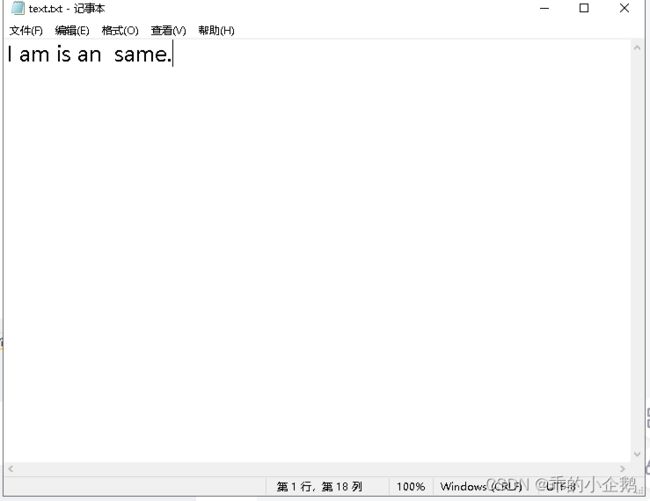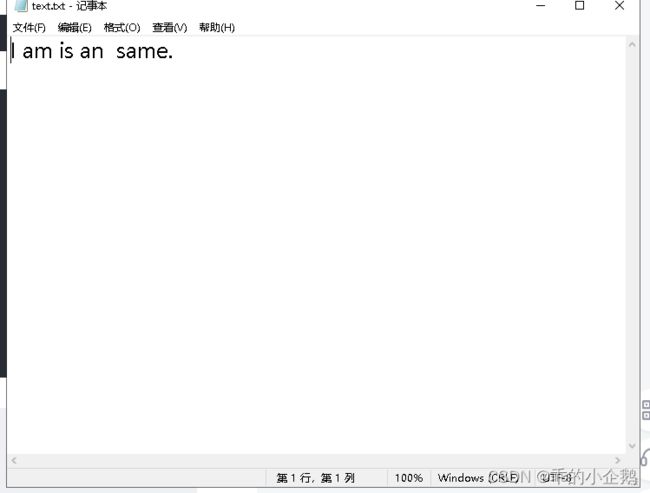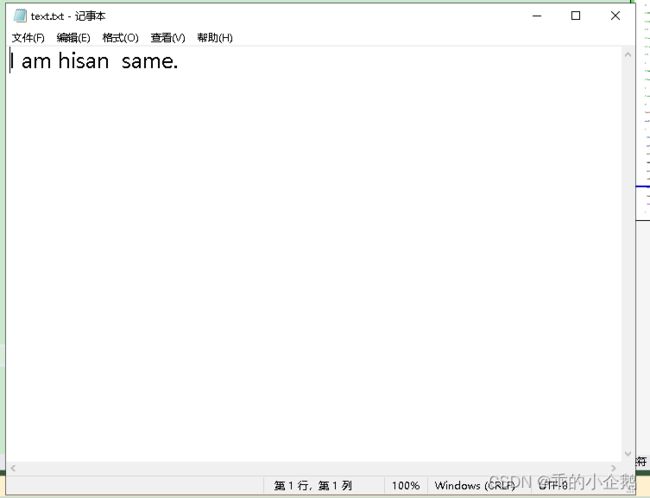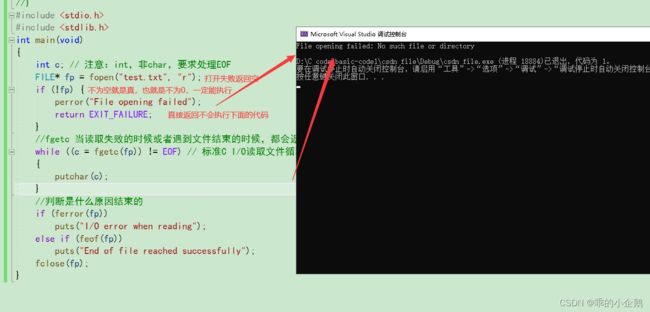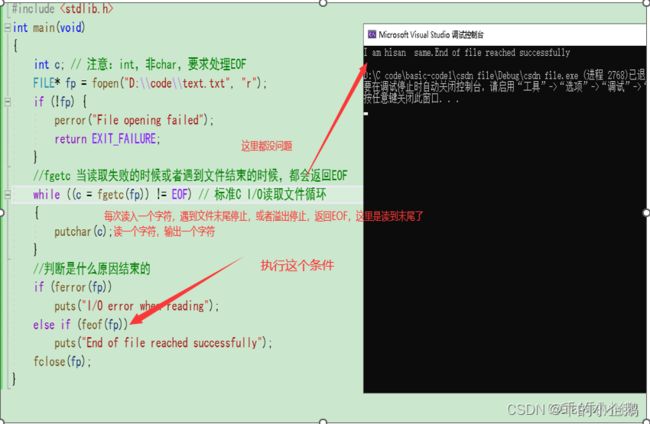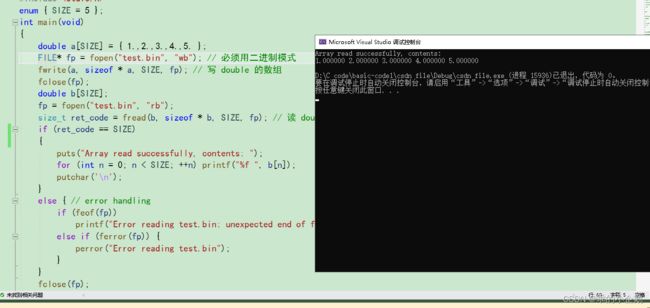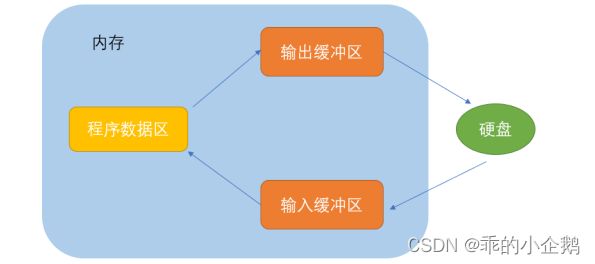文件操作细致详解(下)
5.scanf/fscanf/sscanf
printf/fprintf/sprintf
6. 文件的随机读写
7. 文本文件和二进制文件
8. 文件读取结束的判定
9. 文件缓冲区
scanf/fscanf/sscanf
printf/fprintf/sprintf
那么有什么区别呢?
前面四个我们已经知道,
我们来学习一下sscanf和sprintf这两个函数(很重要)
sscanf
int sscanf(const char *str,const char *format ,…);
初级用法:
数字转换
#include
int main()
{
char str[100];
int a,b,c;
int num;
printf("请输入值:");
gets(str);
num=sscanf(str,"%1d%2d%3d",&a,&b,&c);
printf("a=%d\nb=%d\nc=%d\n",a,b,c);
printf("返回值为:%d",num);
return 0;
}
中级用法:
1.取指定字符串长度
2.取到指定字符为止
运算符%[ ]:说实话我也不知道什么意思,记住就完了
(1)
遇到空格为止:
#include
int main()
{
char str[100] = { 0 };
sscanf("LuckyMrLi2877 Duang", "%[^ ]", str); //取遇到空格为止字符串
printf("str=%s\n", str);
return 0;
}
遇到空格结束:
#include
int main()
{
char str[100] = { 0 };
sscanf("LuckyMrLi2877 Duang", "%s", str); //遇到空格结束,跟scanf一样
printf("str=%s\n", str);
return 0;
}
#include
int main()
{
char str[100] = { 0 };
sscanf("LuckyMrLi2877 Duang", "%[^r]", str); //取遇到字符r为止字符串
printf("str=%s\n", str);
return 0;
}
取仅包含指定字符集:
关于 * 的使用:
#include
int main()
{
char str[100] = { 0 };
sscanf("LuckyMrLi2877 Duang", "%*[^ ]%s", str); //忽略空格之前的字符串
printf("str=%s\n", str);
return 0;
}
高级用法
获取 / 和 @ 之间的字符串
#include
int main()
{
char str[100] = { 0 };
sscanf("iios/12DDWDFF@122", "%*[^/]/%[^@]s", str); // "%*[^/]/%[^@]" 注意“/”的存在
printf("str=%s\n", str);
return 0;
} #include
int main()
{
char str[100] = { 0 };
sscanf("hello, world", "%*s%s", str);
printf("str=%s\n", str);
return 0;
}
也可以读到结构体中
sprintf
int sprintf( char *buffer, const char *format , … );
功能
把格式化的数据写入某个字符串缓冲区。
返回值
如果成功,则返回写入的字符总数,不包括字符串追加在字符串末尾的空字符。如果失败,则返回一个负数。
sprintf 返回以format为格式argument为内容组成的结果被写入string的字节数,结束字符‘\0’不计入内。即,如果“Hello”被写入空间足够大的string后,函数sprintf 返回5。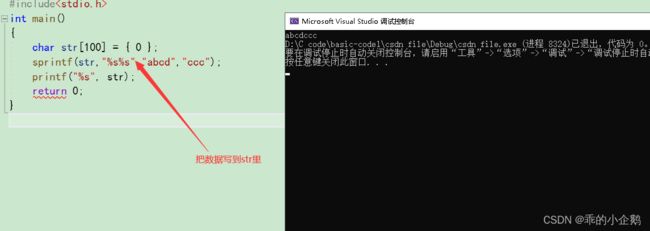
文件的随机读写
fseek
为什么要有这个函数,因为我们如果在读写的话,我们的光标会随着我们读写的内容改变而改变,
当你想要重新定位去找前面的内容时,就需要用到这几个函数来追踪了
根据文件指针的位置和偏移量来定位文件指针。
int fseek ( FILE * stream, long int offset, int origin );seek_set文件起始位置是第一个字符
seek_cur表示文件的相对当前位置
seek_end文件末尾是最后一个字符后面的位置
我们来试验一下
SEEK_SET
执行后
执行后
SEE_CUR
执行后
文件状态
ftell
返回文件指针相对于起始位置的偏移量
#include
int main()
{
FILE* pFile;
pFile = fopen("D:\\code\\text.txt", "w+");
fputs("This is an apple.", pFile);
fseek(pFile, 11, SEEK_SET);
fputs(" sam", pFile);
fseek(pFile,-ftell(pFile),SEEK_CUR);
fputs("I am", pFile);
fclose(pFile);
return 0;
} 运行上述代码前此时的文本
运行上述代码后的文本
rewind
让文件指针的位置回到文件的起始位置
void rewind ( FILE * stream )#include
int main()
{
FILE* pFile;
pFile = fopen("D:\\code\\text.txt", "w+");
fputs("This is an apple.", pFile);
fseek(pFile, 11, SEEK_SET);
fputs(" sam", pFile);
rewind(pFile);
fputs("I am his", pFile);
fclose(pFile);
return 0;
} 没运行上述代码前
文本状态
运行上述代码后
文本和二进制形式
根据数据的组织形式,数据文件被称为文本文件或者二进制文件。
数据在内存中以二进制的形式存储,如果不加转换的输出到外存,就是二进制文件。
如果要求在外存上以ASCII码的形式存储,则需要在存储前转换。
以ASCII字符的形式存储的文件就是文 本文件。
文件读取结束的判定
被错误使用的feof
牢记:在文件读取过程中,不能用feof函数的返回值直接用来判断文件的是否结束。
而是应用于当文件读取结束的时候,判断是读取失败结束,还是遇到文件尾结束。
1. 文本文件读取是否结束,判断返回值是否为 EOF ( fgetc ),或者 NULL ( fgets )
例如:
fgetc 判断是否为 EOF .
fgets 判断返回值是否为 NULL
2. 二进制文件的读取结束判断,判断返回值是否小于实际要读的个数。
例如:
fread判断返回值是否小于实际要读的个数。
正确的使用:
文本文件的例子:
#include
#include
int main(void)
{
int c; // 注意:int,非char,要求处理EOF
FILE* fp = fopen("test.txt", "r");
if (!fp) {
perror("File opening failed");
return EXIT_FAILURE;
}
//fgetc 当读取失败的时候或者遇到文件结束的时候,都会返回EOF
while ((c = fgetc(fp)) != EOF) // 标准C I/O读取文件循环
{
putchar(c);
}
//判断是什么原因结束的
if (ferror(fp))
puts("I/O error when reading");
else if (feof(fp))
puts("End of file reached successfully");
fclose(fp);
} 二进制文件的例子:
#include
enum { SIZE = 5 };
int main(void)
{
double a[SIZE] = { 1.,2.,3.,4.,5. };
FILE* fp = fopen("test.bin", "wb"); // 必须用二进制模式
fwrite(a, sizeof * a, SIZE, fp); // 写 double 的数组
fclose(fp);
double b[SIZE];
fp = fopen("test.bin", "rb");
size_t ret_code = fread(b, sizeof * b, SIZE, fp); // 读 double 的数组
if (ret_code == SIZE) {
puts("Array read successfully, contents: ");
for (int n = 0; n < SIZE; ++n) printf("%f ", b[n]);
putchar('\n');
}
else { // error handling
if (feof(fp))
printf("Error reading test.bin: unexpected end of file\n");
else if (ferror(fp)) {
perror("Error reading test.bin");
}
}
fclose(fp);
} 文件缓冲区
ANSIC 标准采用“缓冲文件系统”处理的数据文件的,所谓缓冲文件系统是指系统自动地在内存中为程序 中每一个正在使用的文件开辟一块“文件缓冲区”。从内存向磁盘输出数据会先送到内存中的缓冲区,装 满缓冲区后才一起送到磁盘上。如果从磁盘向计算机读入数据,则从磁盘文件中读取数据输入到内存缓 冲区(充满缓冲区),然后再从缓冲区逐个地将数据送到程序数据区(程序变量等)。缓冲区的大小根 据C编译系统决定的。
为什么要缓冲区满或者遇到\n亦或者刷新缓冲区才送到程序数据区和磁盘中呢,因为假设我们把a,b,c,d,e,f等字符输出到磁盘中,如果是一个一个输入的话,效率会慢,而且改写也麻烦。如果等缓冲区满或者遇到\n输出到磁盘,那么计算机效率会更高,且便于用户修改在缓冲区送入磁盘之前的数据。
我们可以用一段代码来验证
#include
#include
int main()
{
FILE* pf = fopen("test.txt", "w");
fputs("abcdef", pf);//先将代码放在输出缓冲区
printf("睡眠10秒-已经写数据了,打开test.txt文件,发现文件没有内容\n");
Sleep(10000);
printf("刷新缓冲区\n");
fflush(pf);//刷新缓冲区时,才将输出缓冲区的数据写到文件(磁盘)
//注:fflush 在高版本的VS上不能使用了
printf("再睡眠10秒-此时,再次打开test.txt文件,文件有内容了\n");
Sleep(10000);
fclose(pf);
//注:fclose在关闭文件的时候,也会刷新缓冲区
pf = NULL;
return;
} 